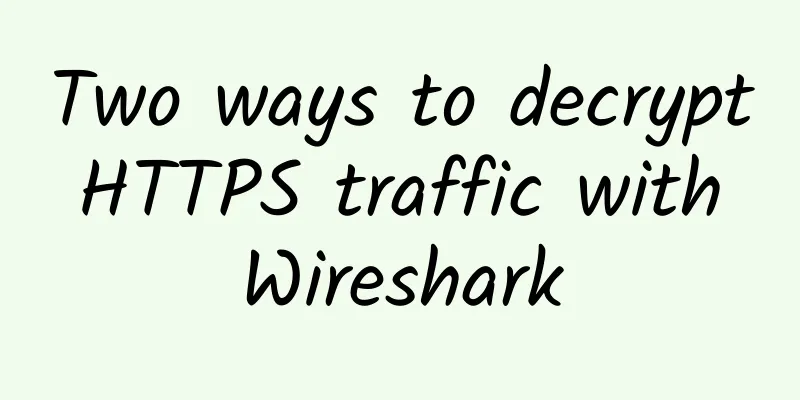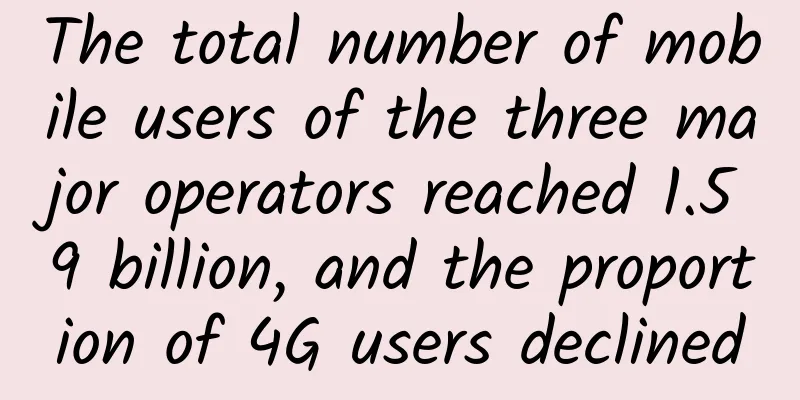Two ways to decrypt HTTPS traffic with Wireshark

|
principle Let's review the entire handshake process of SSL/TLS: (1) Clienthello: Sends the client's capabilities and preferences to the server. It is sent after the connection is established, when renegotiation is desired, or in response to a server's renegotiation request. (2) version: the best protocol version supported by the client (3) Random: 32 bytes in total, 28 bytes of random numbers, 4 bytes of additional information, affected by the client clock (to avoid browser fingerprinting, the 4-byte clock is generally distorted) (4) Session ID: A 32-byte random number used to reestablish a session with the server. If it is empty, it means a new session is created. (5) cipher suit: all cipher suites supported by the client, arranged in order of priority (6) Compression: Compression algorithm supported by the client. No compression is the default. (7) Extensions: Consists of any number of extensions, carrying additional data (8) ServerHello:
(9) Certificate:
(10) ServerKeyExchange: Carries additional data for key exchange, depending on the encryption suite (11) ServerHelloDone: The server has sent all expected handshake messages. (12) ClientkeyExchange: carries the information provided by the client for key exchange (13) ChangeCipherSpec: The sender has obtained enough information for the connection parameters. (14) Finish: The handshake is complete, the message content is encrypted, and both parties can exchange verification and the data required for the integrity of the entire handshake (15) Algorithm: verrify_data = PRF(master_secret, finished_label,hash(handshake_message)) To decrypt HTTPS traffic, you need to get the encryption key, which is generated by the master key, the client random number, and the server random number. From the above handshake process, we can see that the client random number and the server random number are transmitted in the handshake message between the two parties, and the master key (master_secret) is generated by the pre-master key (pre_master_secret) combined with the two random numbers. The pre-master key is exchanged through the key exchange algorithm in the cipher suite (DH, RSA). Therefore, to decrypt HTTPS with Wireshark, you can start from two places:
The following demonstrates two methods for decrypting HTTPS traffic. Method 1 Export the P12 certificate with the private key from the server, or directly export the server's private key. Capture the complete message starting from the TCP three-way handshake: It can be seen that the message at this time is encrypted by TLS and the specific message content cannot be seen. Click Edit -> Preferences -> Protocols -> SSL (some versions only have TLS), and import the RSA key: Since the keys exchanged via the DH method are not passed in the middle, this method can only decrypt keys exchanged via RSA. Import the server certificate: After clicking OK, Wireshark will decrypt the captured message: The message is successfully decrypted, and the request and response of the HTTP message can be intuitively seen. The second By setting environment variables, the master_secret of the browser can be intercepted to achieve the purpose of decrypting HTTPS. Create a new user variable SSLKEYLOGFILE=path\sslkey.log file in the environment variable, and then specify the file location in the ssl configuration in wireshark. Click Edit > Preferences > Protocol > SSL: You can decrypt the browser's access traffic: |
<<: Nginx's four-layer load balancing (Stream module) configuration based on TCP/UDP ports
>>: Inter-thread communication in concurrent programming
Recommend
spinservers San Jose China Telecom Network VPS Simple Test
Some time ago, I shared the information about spi...
What IoT strategies do global operators have?
After several years of preparation and developmen...
Wi-Fi 6 is not yet popular, so why has the latecomer Wi-Fi 7 become a battlefield for giants?
When it comes to Wi-Fi, everyone is familiar with...
Which industry will be the hot spot for artificial intelligence in the 5G era?
In this process, many applications are constantly...
HTTPS - An easy-to-understand explanation of the HTTPS protocol to solve interview problems
I have read some information about the working pr...
New campus, new vision - Guangzhou No. 6 Middle School creates a new highland of smart education with Ethernet color light
Guangzhou No. 6 Middle School is a famous key mid...
TmhHost Summer Holiday Offer: Japan/Hong Kong/US CN2 GIA/High Defense Cloud Server 20% Off Seasonal Payment Starting from 120 Yuan
TmhHost has launched this year's summer promo...
Kvmla Japan Tokyo Softbank VPS promotion 20% off, top up 500 yuan and get 100 yuan
Kvmla, a long-established Chinese VPS hosting com...
Understanding Ethernet Switching Technology in One Article
Labs Guide Currently, most campus networks are ne...
Have you used "Online Documents"? It allows multiple people to work together and synchronize content in real time. It's so efficient!
Have you ever encountered a situation at work whe...
China Unicom's aggressive push to phase out 2G networks is likely to shoot itself in the foot
China Unicom is currently actively promoting the ...
Seven QoS best practices for monitoring cloud traffic
The recent maturation of technologies such as hig...
Huawei releases smart security distribution business strategy and four new AI products
[Shenzhen, China, March 20, 2020] Today, Huawei&#...
Top 5 IT Infrastructure Monitoring Tools
All IT departments face this problem - when probl...
There are so many IoT protocols: Which one is right for you among LoRa, Cat-M and NB-IoT?
It’s been nearly 30 years since the first unoffic...









